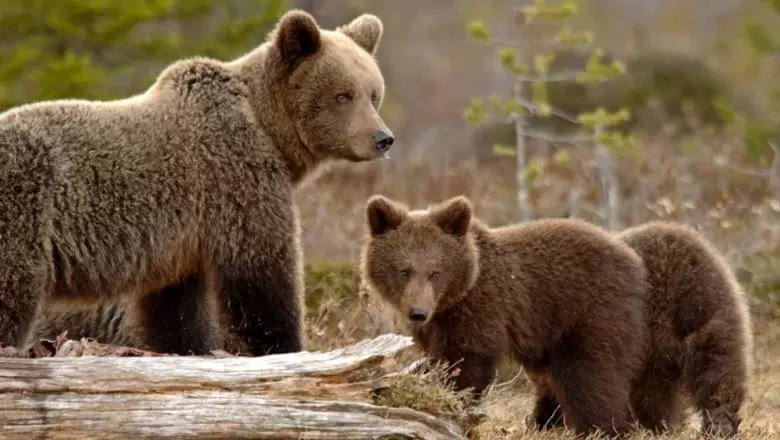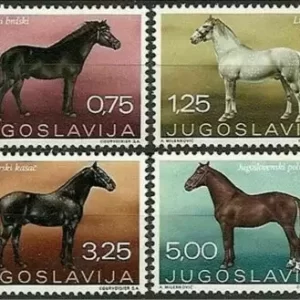Yugoslavia year 1988 World Wildlife Fund – Brown Bears MNH stamps

The brown bear (Ursus arctos) is the largest predator in Europe. It eats a mixed diet, uses carcasses for food and preys on large deer animals. When snow is on the ground, the bear is in hibernation. The brown bear is Finland’s national animal. For ancient Finns the bear was a feared yet revered and respected animal.
The importance of the bear in the minds of ancient Finns is demonstrated by the fact that there are over 200 different names for the bear in our language. All modern Finns are familiar with names such as nalle, otso and mesikämmen, but fewer are aware that common words such as mettä, metsä, otava and mörkö are also ancient synonyms for bear.
Brown bears (Ursus arctos) are known for their omnivorous diet, meaning they consume a wide variety of foods. Their diet includes:
- Berries: Brown bears feed on various types of berries found in their habitats, such as blueberries, raspberries, and blackberries. These fruits provide important nutrients and are often consumed during the summer months.
- Plant roots and shoots: Brown bears will also consume plant roots and shoots, particularly in the spring when these items are more readily available. They may dig up roots or forage for young shoots to eat.
- Small mammals: Brown bears are opportunistic feeders and will prey on small mammals such as rodents when the opportunity arises. They may hunt rodents in areas where they are abundant or dig vigorously to uncover them.
- Fish: Brown bears are skilled fishermen and will catch fish, particularly salmon, during the spawning season. They are known to frequent rivers and streams during this time to take advantage of this food source.
- Calves of many hoofed animals: Brown bears are capable of preying on young or weakened hoofed animals such as deer, moose, or caribou calves. They may target these animals when other food sources are scarce.
- Carrion: Brown bears are scavengers and will consume carrion, or dead animals, when they come across them. They may scavenge carcasses left behind by other predators or feed on animals that have died from natural causes.
Brown bears are known to cache food by burying it in shallow holes, particularly when they have excess food that they cannot consume immediately. This behavior helps them store food for later consumption.
During the winter months, brown bears in most areas, except for some southern regions, enter dens for hibernation. They accumulate large amounts of fat during late summer and autumn to sustain them through the winter months when food may be scarce.
Female brown bears typically give birth to cubs during the winter denning period, after a gestation period of about six to eight months. Cubs are usually born in litters of two, although litter sizes can vary. The mother cares for and protects the cubs until they are old enough to fend for themselves.












Reviews
There are no reviews yet.